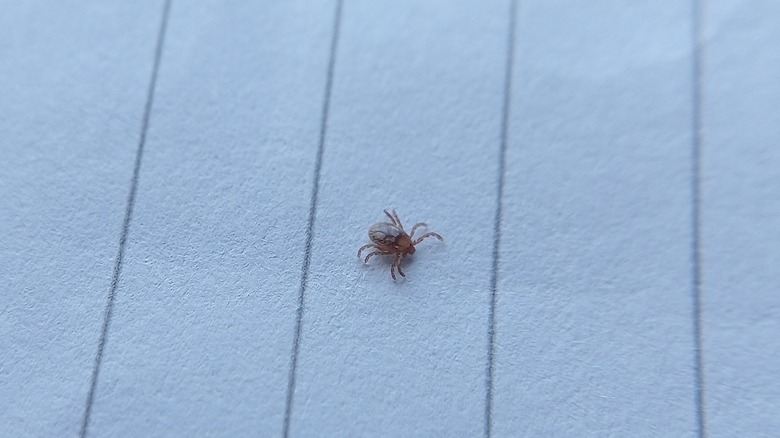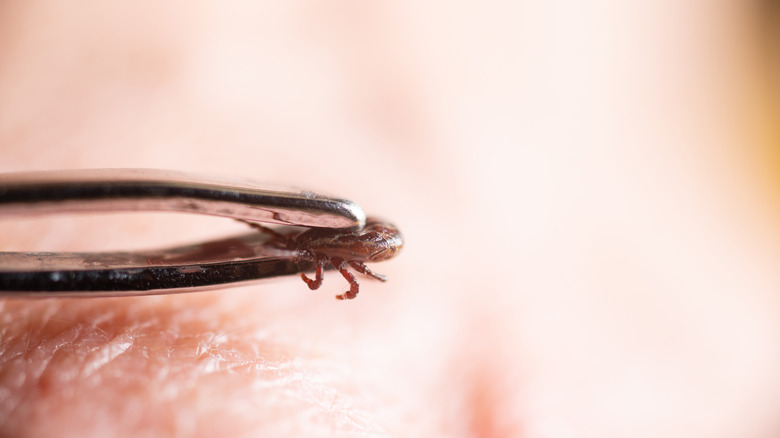If You Find A Tick In Your Home, Reach For A Common Medicine Cabinet Staple
If you find a tick in your home, there's probably no need to run out to the store. The solution may already be in your medicine cabinet: rubbing alcohol.
Long story short, before you dispose of a tick you've found roaming in your bed, carpet, or couch, it's essential to kill it first. You should never squash the tick with your bare fingers or fingernails, as this puts you at risk of infection. Instead, it's best to drown the tick in rubbing alcohol. Place the tick in a container and cover it with rubbing alcohol. Once the tick is dead, you can safely dispose of it in your household garbage or flush it down the toilet.
Before throwing out the tick, of course, some people want to try identifying it: This can be helpful if you're concerned that someone in your family was bitten, as different types of ticks carry different diseases. You can take a photo of the tick for your records and even compare it to the Centers for Disease Control and Prevention's (CDC) list of ticks. All that said, before you get out the rubbing alcohol, there's one caveat — you shouldn't start drowning the tick until you've first removed it from you (or a loved one's) skin.
How to remove a tick after a bite
It's important that you use killing methods on ticks only after the point in which they are no longer attached to a person or animal. Never try to kill the tick (with rubbing alcohol or anything else) while it's attached, as this can cause the tick to release its stomach contents into the bite, potentially increasing the risk of infection.
If you find the tick while it is attached to yourself, a family member, or an animal, here's how to remove it before you kill it. Use clean tweezers to grasp the tick as close to the skin as possible. Slowly and firmly pull the tick straight out of the bite. Do not twist or squeeze the tick, as this could cause the mouth parts to break off in the skin. If this happens, try to remove the mouth parts with the tweezers. If you cannot remove them, leave them alone and let the skin heal.
From there, after the tick is fully removed, you're ready to drop it into a container of rubbing alcohol to drown it. Following that, clean the bite and use rubbing alcohol to disinfect your hands, or just wash with soap and water. While some commercial groups offer testing ticks for infections, the CDC does not recommend it. Instead, they recommend monitoring for any rash or fever and contacting a doctor if symptoms appear.

